Anisodontea malvastroides
- a flower with a double epicalyx.
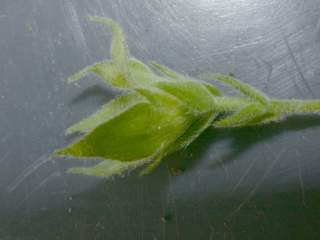
Anoda cristata
- a flower with 7 sepals, rather than the usual 5 (cv. 'Silver Cup')
- a flower with 6 petals, rather than the usual 5 (cv. 'Silver Cup')
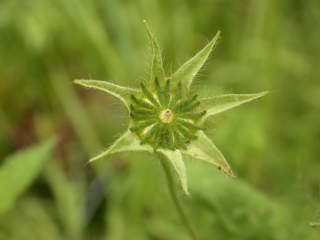
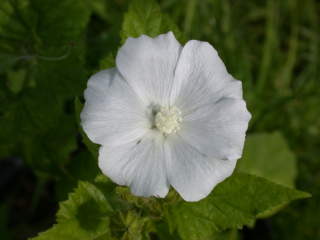
Lavatera ×clementii
- a node with two, opposite, leaves, rather than the usual one (seedling Hinsley 73)
- nodes with two, opposite, leaves, rather than the usual one, and an inflorescence in each axil (cvs 'Burgundy Wine' and 'Blushing Bride', seedling Hinsley 32)
- a node with two, fasciculate, flowers, but only a single leaf/bract, the second flower subtended by a fused pair of stipules (cv. 'Blushing Bride')
- a peduncle bearing two flowers (geminate) rather than the usual one (solitary).
- flowers with 3 petals rather than the usual 5, and or 3 or 4 sepals rather than the usual 5 (seedling Hinsley 84/B)
- flowers with 4 petals rather than usual 5 (cvs. 'Burgundy Wine', 'Blushing Bride' and'Rosea', seedlings Hinsley 13, Hinsley 61, Hinsley 72 and Hinsley 82)
- a flower with a missing petal (most 4-petalled flowers have the petal positions modified so that they're at least usually at least roughly equally spaced; this one had the remaining petals in the normal positions)
- a flower with 6 bracteoles rather than the usual 3, 8 sepals instead of the usual 5 and 8 petals instead of the usual 5 (seedling Hinsley 84/A).
- a flower with a spiral epicalyx of 5 bracteoles, diminishing in size, a calyx of 6 sepals, a supernumary half-calyx of 4 sepals, a spiral corolla of 9 petals, and an abortive 10th petal (cv. 'Rosea').
- foliage with yellow (fading to cream) variegation (cv. 'Barnsley'). This appears to be a genuine genetic sport.



Lavatera olbia
- a flower with 4 petals rather than the usual 5 (cv. 'Eyecatcher', seedlings Hinsley 16 and Hinsley 21)
- a flower with 4 bracteoles, 2 fused and 2 free or nearly so (seedling Hinsley 48)
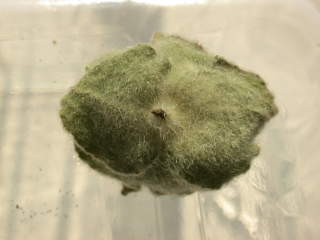
Lavatera thuringiaca
- a flower with a bracteole-like bract at the articulation of the pedicel (seedling Hinsley 45/B)
- a flower with a bracteole-like bract at the articulation of the pedicel, and another between there and the epicalyx (seedling Hinsley 45/B)
Lavatera 'White Angel'
- a flower with 4 petals rather than usual 5
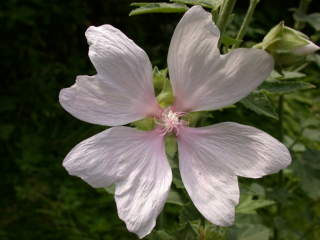
Malva australiana (Lavatera plebeia)
- a flower with 4 petals rather than the usual 5
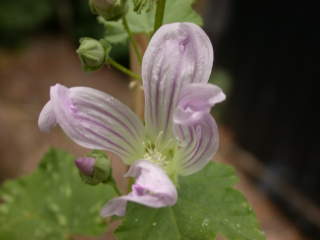
Malva durieui (Lavatera mauritanica)
- a flower with 4 sepals rather than the usual 5
Malva ×intermedia
- an epicalyx with 4 bracteoles rather than the usual 3.
Malva linnaei (Lavatera cretica)
- a flower with 4 petals rather than the usual 5
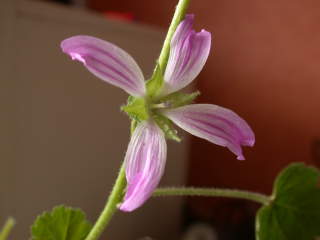
Malva moschata
- flowers with 4 petals rather than the usual 5 (f. alba, f. rosea)
- flowers with intrapetiolar bracts
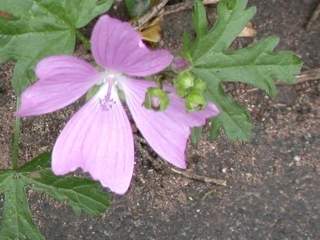
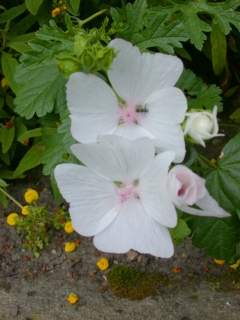
Malva nicaeensis
- with a petaloid stamen
Malva sylvestris
- a flower with 4 petals rather than the usual 5 (cv. 'Bibor Felho', strain Hinsley 28, strain Hinsley 60)
- a flower with 4 bracteoles rather than the usual 3
- pedicels of fascicle fused (fasciculated) (strain Hardwick s.n.)
Malva sylvestris × linnaei
- a flower with 4 petals rather than the usual 5.
Sidalcea candida
- a flower with 6 petals rather than the usual 5
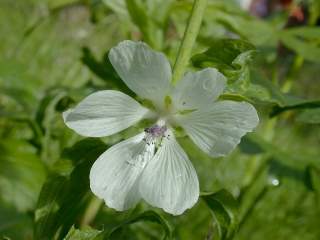
Sidalcea malviflora hort
- a flower with 4 petals rather than the usual 5 (cv 'Candy Girl')
Tilia platyphyllos
- an inflorescence lacking a bract
- an inflorescence with an orbicular bract
- an inflorescence with the bract not fused to the peduncle